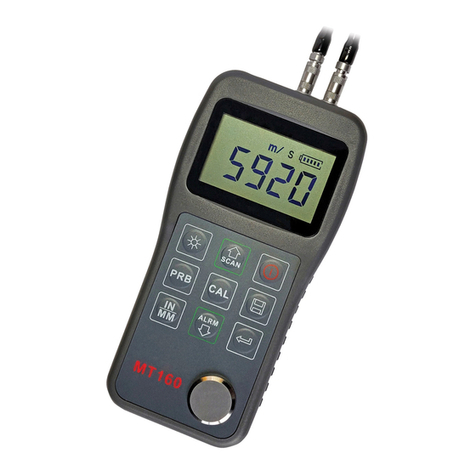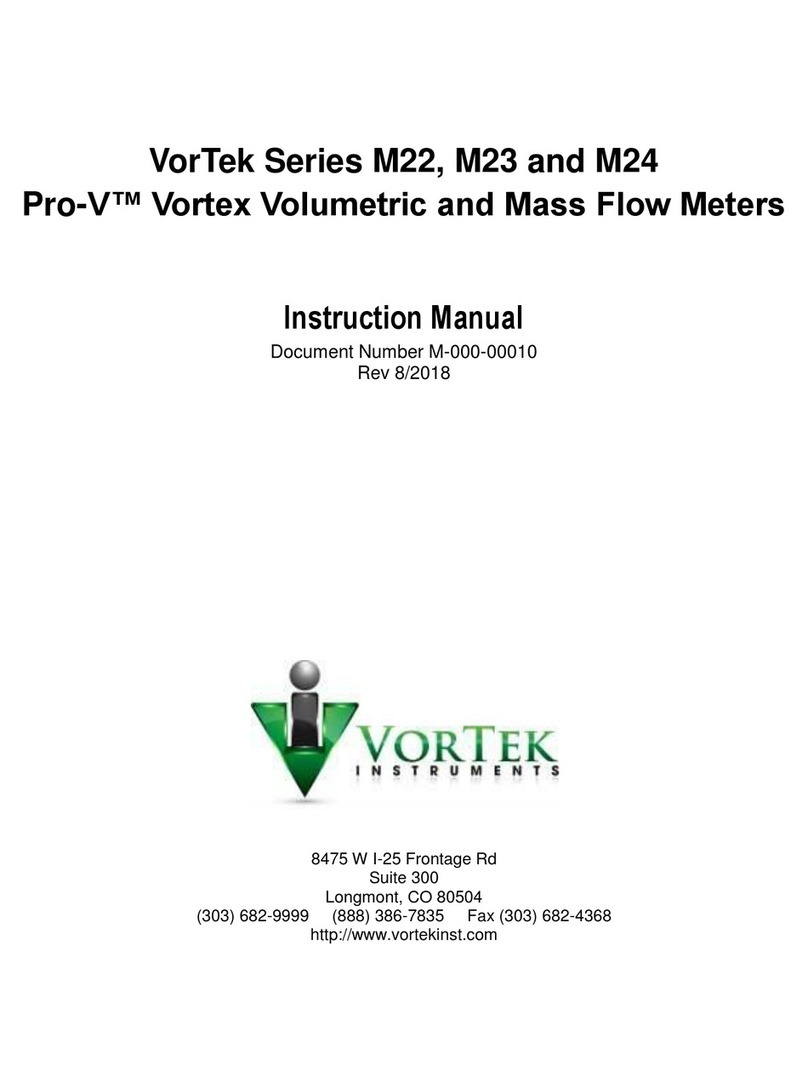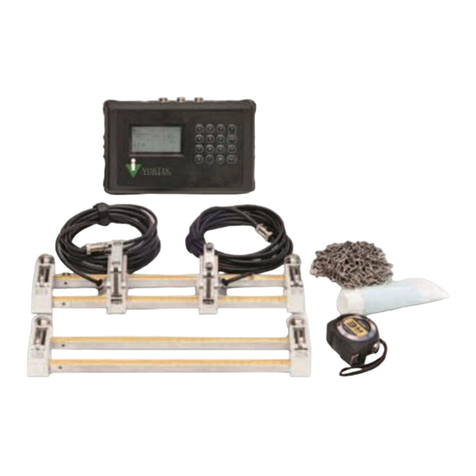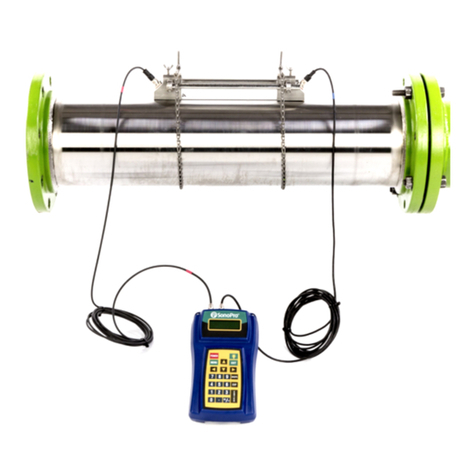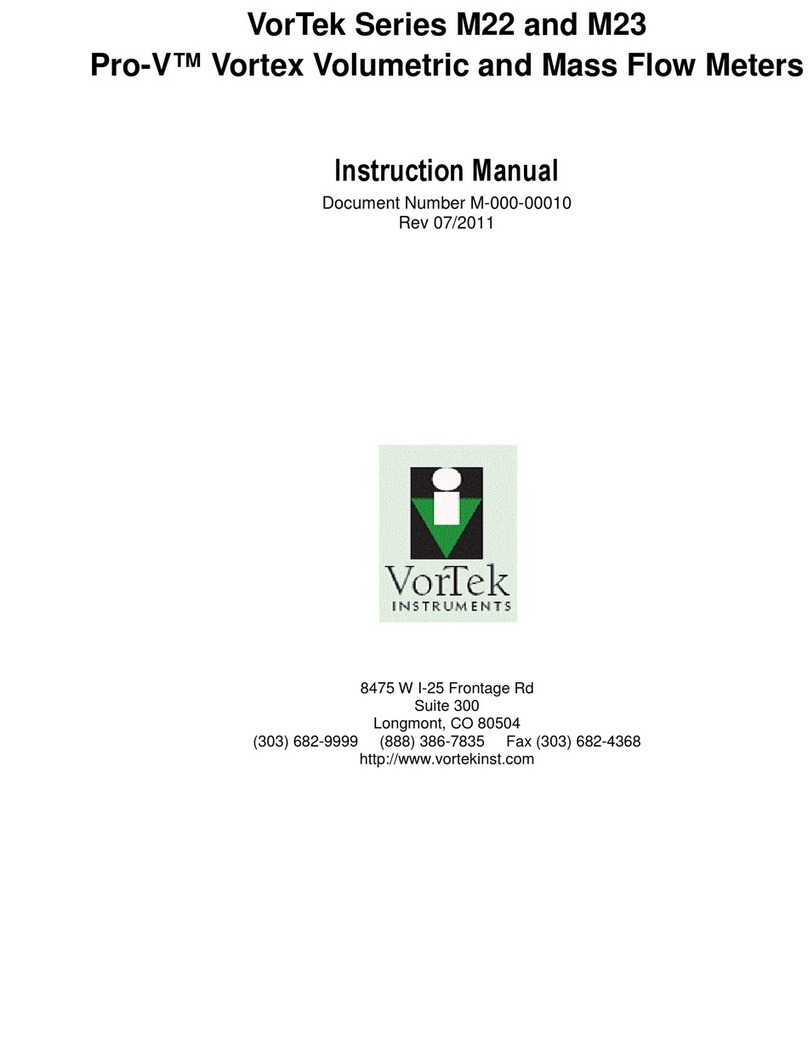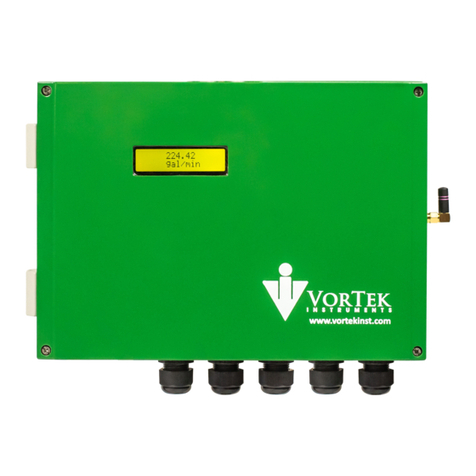
Model M22/M23 Instruction Manual Table of Contents
Table of Contents
Chapter 1 Introduction
Pro-V™Vortex Flow Meters................................................................ 1-1
Using this Manual .........................................................................1-1
Note and Safety Information.........................................................1-2
Receipt of System Components .................................................... 1-2
Technical Assistance.....................................................................1-2
How the Pro-V Vortex Flow Meter Operates......................................1-3
Velocity Measurement/Pressure Drop........................................... 1-3
Flow Meter Configurations..................................................................1-7
Chapter 2 Installation
Installation Overview...........................................................................2-1
Flow Meter Installation Requirements..........................................2-1
Unobstructed Flow Requirements.................................................2-2
Model M22 In-Line Flow Meter Installation....................................... 2-3
Wafer-Style Flow Meter Installation............................................. 2-4
Flange-Style Flow Meter Installation............................................2-5
Model M23 Insertion Flow Meter Installation ....................................2-6
Cold Tap Guidelines......................................................................2-7
Hot Tap Guidelines .......................................................................2-8
Flow Meter Insertion ...........................................................................2-9
Installing Meters with a Compression Connection ..................... 2-10
Installing Meters with a Packing Gland Connection................... 2-12
Installing Meters (Packing Gland), No Insertion Tool................ 2-15
Adjusting Meter Orientation..............................................................2-17
Display/Keypad Adjustment ....................................................... 2-17
Enclosure Adjustment.................................................................2-18
Wiring Connections...........................................................................2-19
Input Power Connections............................................................2-19
Pulse Output Connections........................................................... 2-21
Remote Electronics Wiring.........................................................2-22
Chapter 3 Operating Instructions
Flow Meter Display/Keypad................................................................ 3-1
Start Up................................................................................................3-2
Using the Setup Menus........................................................................ 3-3
Programming the Flow Meter....................................................... 3-3
Output Menu .................................................................................3-4
Display Menu................................................................................3-5
Totalizer Menu.............................................................................. 3-6
Units Menu.................................................................................... 3-7
Diagnostics Menu..........................................................................3-8
Calibration Menu ..........................................................................3-9
Password Menu...........................................................................3-10
IM-M22/M23 0-3












